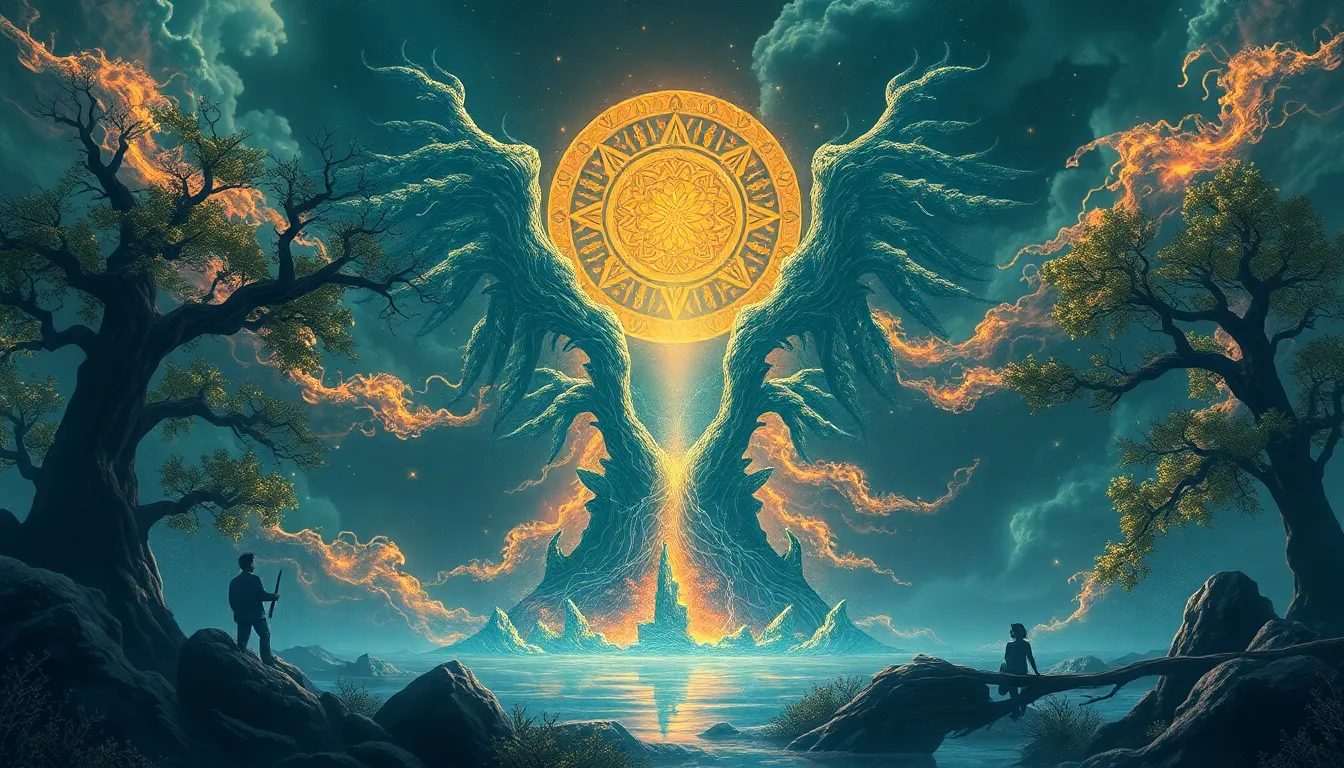The Incan Cosmos: A Tapestry of Myth and Astronomy
The Incan civilization, renowned for its architectural marvels and sophisticated social structures, possessed a deep understanding of the celestial realm. The Incan people believed that the cosmos was a complex tapestry woven with threads of mythology and astronomy, where the stars, the sun, and the moon held immense spiritual significance.
Their understanding of the heavens was not merely a scientific pursuit but a deeply ingrained part of their religious beliefs and daily lives. Astronomers played a vital role in Incan society, observing the celestial bodies to predict weather patterns, guide agricultural practices, and interpret the will of the gods. From the towering peaks of the Andes Mountains, the Incans looked to the heavens, seeking guidance and meaning in the movements of the stars and planets.
The Sun, Moon, and Stars: Gods in the Sky
The Incan people believed that the celestial bodies were divine beings, powerful entities that influenced every aspect of their existence. The Sun, known as Inti, was revered as the most important deity, the source of life and warmth. Inti was a male god, often depicted as a young man with a golden disc on his head, radiating light and energy. The Sun was believed to govern the seasons, the growth of crops, and the prosperity of the empire.
The Moon, Mama Killa, was seen as the wife of Inti and a powerful female deity. Mama Killa was associated with fertility, the cycle of life and death, and the tides. She was often depicted as a young woman with a silver disc on her head, radiating a gentle, cool light. The Moon's phases were seen as a reflection of Mama Killa's changing moods, influencing the emotions and actions of the people on Earth.
The stars, too, held spiritual significance for the Incan people. Each constellation was identified as a specific deity, often related to animals, plants, or mythical creatures. The constellations were believed to influence the lives of individuals and the fate of the empire. The Incan people used the stars to navigate, to tell time, and to predict the future.
The Inti, Mama Killa, and the Constellations: Celestial Deities
The Incan people believed that Inti, Mama Killa, and the constellations were not simply celestial bodies but divine beings who actively interacted with the human world. Inti's daily journey across the sky was seen as a cycle of life, death, and rebirth, a reminder of the constant flow of time and the cyclical nature of the world. Mama Killa's phases were seen as a reflection of her moods, sometimes benevolent and nurturing, sometimes fierce and demanding.
The constellations were believed to be the guardians of the sky, each with its own specific powers and influence. Some constellations were associated with fertility, others with war, and still others with the weather. The Incans believed that the constellations could influence human affairs, offering protection or bringing misfortune.
The Milky Way: The River of Stars and the Path of the Dead
The Milky Way, a band of light stretching across the night sky, held a unique place in Incan mythology. They called it "Mayu," which means "river," and saw it as a celestial pathway connecting the earthly realm with the realm of the gods. It was believed to be a river of stars, flowing from the heavens to the earth, and back again.
The Milky Way was also seen as the path of the dead, leading souls to the afterlife. The Incan people believed that after death, their spirits would journey along the Milky Way to the dwelling place of the gods. The Milky Way was a powerful symbol of life, death, and the interconnectedness of all things.
The Importance of Astronomical Observations in Incan Society
Astronomical observations were essential to the Incan way of life. The Incans were skilled astronomers, using their knowledge of the heavens to guide their agricultural practices, to predict the weather, and to manage their complex society.
The movements of the sun, moon, and stars allowed the Incans to create a precise calendar, a system that helped them to track the seasons and the timing of agricultural cycles. The Incan calendar was divided into 12 months, each named after a constellation or a celestial event. This calendar ensured that the people knew when to plant and harvest crops, ensuring the food supply of their large empire.
The Calendar and Agricultural Cycles: Guided by the Stars
The Incan calendar, a testament to their astronomical prowess, was intricately linked to the agricultural cycles of their land. The movements of the sun, moon, and stars provided a precise system for tracking the seasons and the optimal times for planting and harvesting crops. The year was divided into twelve months, each named after a constellation or a celestial event, symbolizing the Incan people's deep respect for the cosmos.
The Incan calendar, known as the Inti Raymi, was not merely a calendar but a living representation of their interconnectedness with the natural world. Understanding the celestial cycles allowed them to manage their agricultural practices effectively, ensuring the food security of their vast empire. The success of their agriculture, the backbone of their society, was directly tied to their astronomical wisdom.
The Role of the Priests: Interpreters of the Divine Messages
The Incan priests, known as the amautas, played a crucial role in interpreting the celestial messages and guiding the people. They were the guardians of astronomical knowledge, responsible for observing the stars, the sun, and the moon, and deciphering their significance. The amautas were seen as intermediaries between the human world and the divine realm.
They used their knowledge to advise the Inca ruler, predict the future, and guide the religious ceremonies. Their role was vital for maintaining order and harmony within the empire, ensuring that the people lived in accordance with the will of the gods. The amautas were deeply respected figures, their pronouncements highly valued, as they were believed to speak on behalf of the celestial deities.
The Temple of the Sun: A Celestial Observatory
The Temple of the Sun, Coricancha, in Cuzco, was not just a place of worship but also a celestial observatory. This magnificent structure, built with intricately carved stones, was meticulously aligned with the solstices and equinoxes. The temple was designed to capture the rays of the sun, a testament to the Incan people's reverence for Inti, the Sun God.
The temple's architecture served as a tool for astronomical observations, allowing the priests to track the movements of the sun and other celestial bodies. The temple's design was a masterpiece of engineering and astronomy, reflecting the sophisticated understanding of the heavens possessed by the Incan civilization.
Theories on Incan Astronomical Knowledge: A Legacy of Observation
The Incan people, lacking a written language, passed down their astronomical knowledge through oral traditions and practical observations. They meticulously observed the night sky, noting the movements of stars and planets over generations, accumulating a vast storehouse of celestial knowledge.
Modern scholars studying Incan astronomy have proposed various theories about the origins and scope of their astronomical knowledge. Some believe that the Incan knowledge was largely based on empirical observations, honed over centuries of meticulous tracking of celestial bodies. Others suggest that they might have possessed a more sophisticated understanding of the cosmos, possibly influenced by earlier civilizations in the region.
The Inca’s Legacy: A Celestial Heritage for Future Generations
The Incan civilization may have vanished, but their legacy in the form of their astronomical knowledge continues to inspire awe and wonder. Their understanding of the celestial realm, woven into their mythology and daily life, serves as a testament to their profound connection with the cosmos. Their astronomical insights, passed down through generations, offer a glimpse into the intellectual brilliance and spiritual depth of this lost civilization.
The Incan legacy reminds us of the enduring power of observation and the interconnectedness of humanity with the natural world. It inspires us to look to the heavens, not just for beauty and wonder, but also for understanding and guidance, a reminder that the stars have held the secrets of the universe since time immemorial.
FAQ
-
What were the most important deities in Incan astronomy? Inti (the Sun God) and Mama Killa (the Moon Goddess) were the most important deities in Incan astronomy, representing the life-giving forces of the cosmos.
-
How did the Incans use their astronomical knowledge? The Incans used their astronomical knowledge to create a calendar, predict agricultural cycles, guide religious ceremonies, and navigate the terrain.
-
What is the significance of the Milky Way in Incan mythology? The Milky Way, called Mayu, was seen as a celestial river connecting the earthly realm with the realm of the gods and also as the path of the dead.
-
What was the role of the Incan priests in astronomy? The Incan priests, known as amautas, were responsible for observing the celestial bodies, interpreting their movements, and advising the Inca ruler.
-
What is the Temple of the Sun? The Temple of the Sun, Coricancha, in Cuzco, was a place of worship, but also a celestial observatory, meticulously aligned with the solstices and equinoxes.




